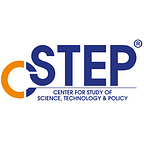MGNREGA: Improving Lives & Livelihoods
By Dr Indu K Murthy.
Reams of newsprint have been spent on the devastating blow to the job market and economy during the current pandemic. Amid this pall of gloom, Mahatma Gandhi National Rural Employment Guarantee Act (MGNREGA) brought comfort to 55 million households by ensuring livelihoods from April to August 2020. Many of those who got jobs under the scheme were the ones who had reverse migrated from cities due to complete shutdown during the pandemic.
Touted as one of the world’s largest social protection programmes, MGNREGA provides at least 100 days of guaranteed wage employment in a financial year to every rural household whose adult members volunteer for unskilled manual work. That aside, the programme aims at rejuvenation of the natural resource base of rural areas to enhance livelihood security. Incidentally, more than 70% of the investment in MGNREGA is on water and land-based (natural resource management — NRM) activities.
From April to August this year alone, the scheme managed to repair, rejuvenate or construct over 600,000 water harvesting structures such as check dams, farm ponds, or tanks across India. Ultimately, water harvesting enables better groundwater recharge and water availability for rain-fed farming — that accounts for 51% of the net sown area and nearly 40% of the total food production in India.
Need for a monitoring framework
Till date, MGNREGA accounts for only the number of works done, person-days generated, and the number of households that have benefited from the programme. It does not monitor or report on the assets created under the programme. Thus, the long-term gains in the areas of natural resource rejuvenation and conservation, and reduction in risks or vulnerability reduction as a result of multiple co-benefits of MGNREGA remain unaccounted for.
Given the large budget allocation and the NRM-focus of the programme, it is important that the assets created under it are durable, and the benefits are monitored and quantified. Geotagging of assets created under MGNREGA since 2006, makes this feasible.
However, tracking the benefits of MGNREGA that go beyond job creation and asset creation requires a framework. Such a framework should be able to track not just the asset location but its condition and the benefits that are generated through improvement in natural capital — water, soil, and tree cover.
Needless to say, besides the obvious environmental benefits of the programme, a monitoring framework will enable India report its adaptation actions and mitigation co-benefits — which accrue as a result of the scheme — under the Paris Agreement.
Dr Indu K Murthy is a Principal Research Scientist in the Adaptation and Risk Analysis team at CSTEP. She may found on Twitter @Indukmurthy
